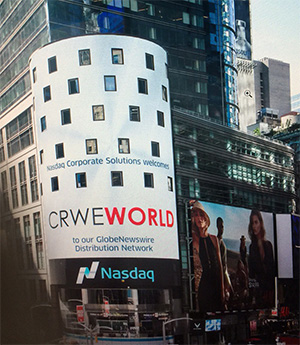SeaStar Medical Reaches Interim Enrollment Target for NEUTRALIZE-AKI Pivotal Trial of SCD Therapy for Adult Patients with Acute Kidney Injury
Indication Has Been Granted FDA Breakthrough Device Designation for Potential PMA Filing
DENVER, May 13, 2025 (GLOBE NEWSWIRE) -- SeaStar Medical Holding Corporation (Nasdaq: ICU), a commercial-stage healthcare company focused on transforming treatments for critically ill patients facing organ failure and potential loss of life, announced today that it has successfully reached the halfway point in the NEUTRALIZE-AKI pivotal clinical trial, enabling a per protocol prespecified interim analysis by the trial’s independent Data Safety Monitoring Review Board (DSMB). SeaStar Medical anticipates the DSMB will report its findings to the company in the third quarter of 2025.
The NEUTRALIZE-AKI trial is evaluating the SCD therapy as a treatment for adult patients with Acute Kidney Injury (AKI) requiring continuous renal replacement therapy (CRRT). The prespecified per-protocol interim analysis of the first 100 patients of the total anticipated 200 is designed to evaluate the safety and powering assumptions for the trial. The interim analysis is a blinded analysis to all parties except the DSMB and will occur following the compilation and assessment of the primary endpoint for these 100 patients.
“We are very pleased to reach this important enrollment milestone in the NEUTRALIZE-AKI pivotal trial,” stated Eric Schlorff, CEO of SeaStar Medical. “Kevin and his team have done an incredible job activating nationally recognized clinical trial sites, such as Cleveland Clinic, Mayo Clinic, and Stanford Medical Center. These and our other clinical sites are clearly aware of the high unmet need of these patients, and we are grateful for their active participation in the trial.”
“Prior interventional studies of the SCD therapy demonstrated improved treatment outcomes in patients treated with SCD when compared to standard of care.” stated Kevin Chung, MD, Chief Medical Officer of SeaStar Medical. “The NEUTRALIZE-AKI pivotal trial is rigorously powered to detect a true efficacy signal, and confirming safety remains a top priority. This interim analysis seeks to validate the therapy’s safety profile and efficacy potential – critical factors in supporting a DSMB recommendation to proceed to full trial completion.”
About the NEUTRALIZE-AKI Pivotal Trial
The NEUTRALIZE-AKI (NEUTRophil and monocyte deActivation via SeLective Cytopheretic Device – a randomIZEd clinical trial in Acute Kidney Injury) is expected to enroll up to 200 adult patients with AKI requiring CRRT. The trial’s primary endpoint is a composite of 90-day mortality or dialysis dependency of patients treated with SCD in addition to CRRT as the standard of care, compared with the control group receiving only CRRT standard of care. The trial has enrolled 100 patients and a per protocol interim analysis on the trial’s 90-day primary endpoint will be conducted by the trial’s independent DSMB. Secondary endpoints of the trial include mortality at 28 days, ICU-free days in the first 28 days, major adverse kidney events at Day 90 and dialysis dependency at one year. The study will also include subgroup analyses to explore the effectiveness of SCD therapy in AKI patients with sepsis and acute respiratory distress syndrome.
About the NEUTRALIZE-AKI Interim Analysis
The NEUTRALIZE-AKI protocol specifies that an interim analysis will be conducted by the independent DSMB on the primary endpoint of the trial when approximately 50% of patients (100 patients) achieve 90-day follow-up. The protocol specifies a very low probability of stopping the trial for efficacy at the interim analysis and would also require concurrence by the FDA. It also specifies that the DSMB may recommend a sample size re-estimation to maintain a statistically significant CRRT plus SCD therapy effect by the end of the study, based on the interim results. And while SeaStar Medical believes it is unlikely, the DSMB could also recommend stopping the trial for futility.
About Acute Kidney Injury (AKI) and Hyperinflammation
AKI is characterized by a sudden and temporary loss of kidney function and can be caused by a variety of conditions such as COVID-19, sepsis, severe trauma and surgery. AKI can cause hyperinflammation, which is the overproduction or overactivity of inflammatory effector cells and other molecules that can be toxic. Damage resulting from hyperinflammation in AKI can progress to other organs, such as the heart or liver, and potentially to multi-organ dysfunction or even failure that could result in worse outcomes, including increased risk of death. Even after resolution, these patients may face chronic kidney disease or end-stage renal disease requiring dialysis, among other complications. Hyperinflammation may also contribute to added healthcare costs, such as prolonged ICU stays and increased reliance on dialysis and mechanical ventilation.
About the FDA’s Breakthrough Device Designation
FDA grants Breakthrough Device Designation when a device provides for more effective treatment or diagnosis of life-threatening or irreversibly debilitating human disease or conditions. It must also represent one or more of the following: a) a breakthrough technology, b) a therapeutic treatment where no approved or cleared alternatives exist, c) offer significant advantages over existing approved or cleared alternative, and/or d) the device availability is in the best interest of patients. The Breakthrough Device Designation is designed to provide timely access to medical devices to speed up development, assessment, and review for FDA approval.
About the SeaStar Medical Selective Cytopheretic Device Therapy
The Selective Cytopheretic Device (SCD) therapy is designed as a disease-modifying device that neutralizes over-active immune cells and stops the cytokine storm that yields destructive hyperinflammation and creates a cascade of events that wreak havoc in the patient’s body. The SCD therapy has broad applications in multiple acute and chronic kidney and cardiovascular diseases, representing nearly a million patients who today have no FDA-approved options for treating their disease. Unlike pathogen removal and other blood-purification tools, the SCD therapy is integrated with an existing continuous renal replacement therapy (CRRT) hemofiltration system to selectively target and transition proinflammatory monocytes to a reparative state and promote activated neutrophils to be less inflammatory. This unique immunomodulation approach may promote long-term organ recovery, eliminate the need for future RRT, including dialysis, and prevent loss of life.
About SeaStar Medical
SeaStar Medical is a commercial-stage healthcare company focused on transforming treatments for critically ill patients facing organ failure and potential loss of life. SeaStar’s first commercial product, QUELIMMUNE (SCD-PED), was approved in 2024 by the U.S. Food and Drug Administration (FDA). It is the only FDA approved product for the ultra-rare condition of life-threatening acute kidney injury (AKI) due to sepsis or a septic condition in critically ill pediatric patients. SeaStar’s Selective Cytopheretic Device (SCD) therapy has been awarded Breakthrough Device Designation for six therapeutic indications by the FDA, enabling the potential for a speedier pathway to approval and preferable reimbursement dynamics at commercial launch. The company is currently conducting a pivotal trial of its SCD therapy in adult patients with AKI requiring continuous renal replacement therapy, a life-threatening condition with no effective treatment options that impacts over 200,000 adults in the U.S. annually.
For more information visit www.seastarmedical.com or visit us on LinkedIn or X.
Forward-Looking Statements
This press release contains certain forward-looking statements within the meaning of the “safe harbor” provisions of the Private Securities Litigation Reform Act of 1955. These forward-looking statements include, without limitation, SeaStar Medical’s expectations with respect to anticipated patient benefits from our products; the expected regulatory approval process and timeline for our products; and the ability of SeaStar Medical to meet the expected timeline. Words such as “believe,” “project,” “expect,” “anticipate,” “estimate,” “intend,” “strategy,” “future,” “opportunity,” “plan,” “may,” “should,” “will,” “would,” “will be,” “will continue,” “will likely result,” and similar expressions are intended to identify such forward-looking statements. Forward-looking statements are predictions, projections and other statements about future events that are based on current expectations and assumptions and, as a result, are subject to significant risks and uncertainties that could cause the actual results to differ materially from the expected results. Most of these factors are outside SeaStar Medical’s control and are difficult to predict. Factors that may cause actual future events to differ materially from the expected results include, but are not limited to: (i) the risk that SeaStar Medical may not be able to obtain regulatory approval of its SCD product candidates; (ii) the risk that SeaStar Medical may not be able to raise sufficient capital to fund its operations, including current or future clinical trials; (iii) the risk that SeaStar Medical and its current and future collaborators are unable to successfully develop and commercialize its products or services, or experience significant delays in doing so, including failure to achieve approval of its products by applicable federal and state regulators, (iv) the risk that SeaStar Medical may never achieve or sustain profitability; (v) the risk that SeaStar Medical may not be able to secure additional financing on acceptable terms; (vi) the risk that third-party suppliers and manufacturers are not able to fully and timely meet their obligations, (vii) the risk of product liability or regulatory lawsuits or proceedings relating to SeaStar Medical’s products and services, (viii) the risk that SeaStar Medical is unable to secure or protect its intellectual property, and (ix) other risks and uncertainties indicated from time to time in SeaStar Medical’s Annual Report on Form 10-K, including those under the “Risk Factors” section therein and in SeaStar Medical’s other filings with the SEC. The foregoing list of factors is not exhaustive. Forward-looking statements speak only as of the date they are made. Readers are cautioned not to put undue reliance on forward-looking statements, and SeaStar Medical assumes no obligation and do not intend to update or revise these forward-looking statements, whether as a result of new information, future events, or otherwise.
For more information visit www.seastarmedical.com or visit us on LinkedIn or X.
Contact:
SeaStar Investor Relations:
IR@SeaStarMed.com

© 2025 GlobeNewswire, Inc. All Rights Reserved.



















